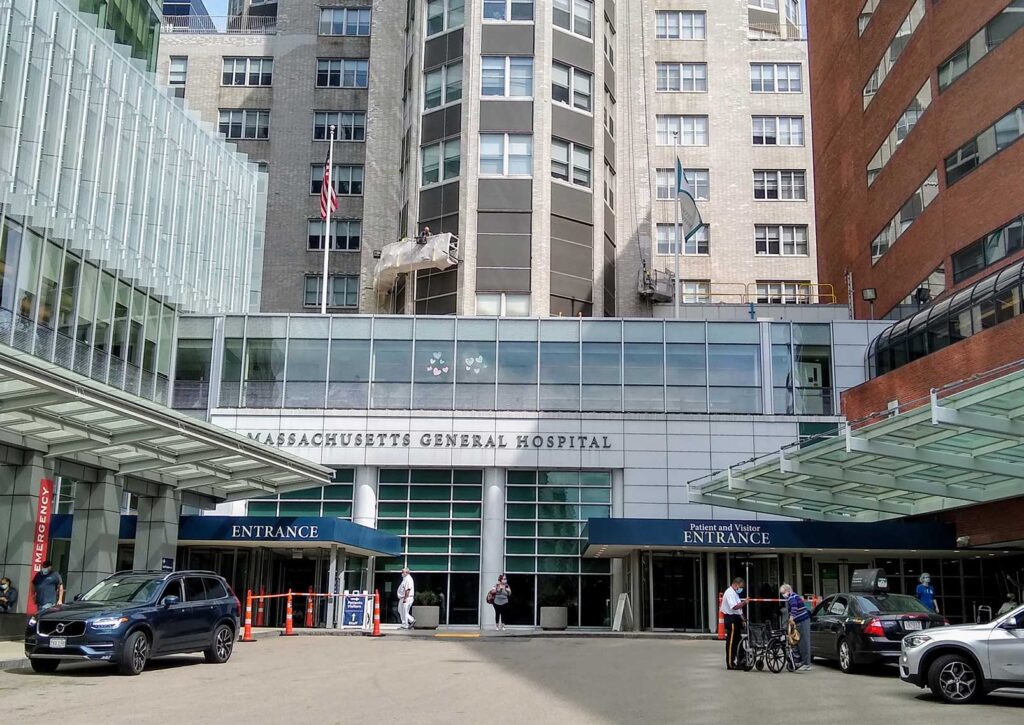Hospitals mull their role in climate change
Doctors urged to make connection between ailments and emissions

It’s a complex dilemma: In treating patients — including those dealing with the impact of climate change — hospitals produce emissions that can worsen health trends, particularly in communities of color and environmental justice communities that often face disproportionate risk from the global phenomenon.
That’s a major part of the puzzle as hospitals and others in the health care industry attempt to address how climate affects their patients.
According to a 2022 report from the Commonwealth Fund, the health care industry is responsible for 8.5% of greenhouse gas emissions in the United States. In comparison, by other estimates, transportation emits just shy of 30% of greenhouse gases in the country and the agriculture sector produces about 10%.
The emissions from hospitals can wind up causing health challenges in the patients they treat.
“We have an obligation, as does everybody, because what we pollute, our footprint, ultimately harms our planet and eventually our patients,” said Dr. Wynne Armand, associate director of the Center for the Environment and Health at Massachusetts General Hospital (MGH). “It just may not be as palpable as, you know, in the moment treating a patient in the office.”
Armand said there’s a growing recognition of the feedback loop, but there still needs to be increased efforts to find creative solutions that don’t lower patient care, as hospitals decide what equipment and processes to use.
“There’s going to be a lot of things that we are going to weigh, as the health care system. We’re going to weigh patient outcomes. We’re going to weigh effectiveness. We’re going to weigh finances. We’re going to weigh infection control,” she said. “I think, though, we really need to also throw in there now the environmental impact of the decisions that we make.”
MGH, Armand said, has worked to switch to renewable energy sources and reduce energy consumption. The hospital also conducted a recent audit of its emissions — from what is directly emitted, to greenhouse gases from the energy used, to more nebulous calculations of the climate impacts from other materials and tools used..
The hospital recently received the results from its audit, she said, which will help inform steps to take moving forward. Some have already been implemented.
For instance, the gases used for anesthesia can, themselves, increase emissions. At MGH, doctors have worked to monitor how much anesthetic gas is used and at what rate it is administered, aiming to use it more efficiently without diminishing patient care. Armand said within a year they have reduced the footprint from the gases by 80%.
The hospital also has taken steps to reduce food waste and recycle any waste into biofuels to address climate change impacts in other operations.
Such work to address sustainability and emissions is one of two buckets that climate efforts in health care fall into, said Suellen Breakey, associate director at the MGH Institute for Health Professions’ Center for Climate Change, Climate Justice and Health. The other bucket is increasing awareness of the health impacts of climate change among both medical practitioners and patients.
Experts in the field discussed what that might mean for doctors at a virtual speaking event Nov. 16 hosted by the New England Journal of Medicine.
In the opening talk, Dr. Renee Salas, co-director of the journal’s Climate Crisis and Clinical Practice Initiative, said climate awareness needs to be added across the board.
“We also need to add a climate lens to all we do in medicine, which is considering how climate change is impacting these different facets of our system, both now and how it will increasingly do so in the future,” Salas said.
That broader acknowledgment of how environmental factors play into the health challenges faced by patients was a common refrain at the event.
During a panel discussion, Dr. Cheryl Holder, interim associate dean for diversity, equity, inclusivity and community initiatives at Florida International University, said patients may not be able to identify the link between their symptoms and climate impacts, so doctors must know to make the connections.
“When the patient shows up, they’re not going to tell you that, ‘Oh, I’m impacted by climate change.’ They’re not even quite connecting the dots,” Holder said. “It’s so dependent on us to be aware and know our communities and know what’s happening.”
Salas, in her opening words, had described a patient who was struggling with asthma. Despite prescribing treatments, Salas was seeing little improvement in the patient’s condition. It wasn’t until she considered where the patient lived — right next to a major highway, where she was constantly exposed to air pollutions from vehicles — that more pieces clicked into place.
“My inhalers and steroids were only Band-Aids on bullet wounds,” Salas said, “We were only temporarily improving her condition, but not changing the polluted and pollinated air that was making it challenging or impossible to manage her disease.”
Breakey, who also teaches in the Institute for Health Professions’ School of Nursing, said all health professionals will need to play a role in helping spread awareness.
Raising that awareness doesn’t need to add brand new information, she said, but rather builds on the topics health professionals already study and know. For instance, nursing students at the Institute of Health Professions already learn about strokes and asthma, so the curriculum just needs to add information about the impacts of factors like air quality on those diseases.
“It’s about incorporating climate change into what we’re already teaching,” she said.






